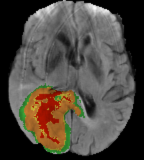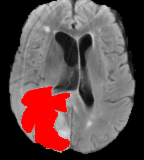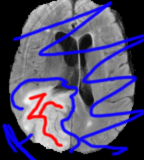Image Segmentation
The goal of image segmentation is to divide an image into a set of semantically meaniningful regions. Fundamental components of MRI is the diagnosis, delineation and separation of tumor tissues, such as active cells, neurotic core and edema from the normal brain tissues. Classification and Segmentation are interlinked because segmentation implies a classification. Before any therapy, it's crucial to segment the tumor in order to protect healthy tissues while damaging and destroying tumor cells during the therapy.


